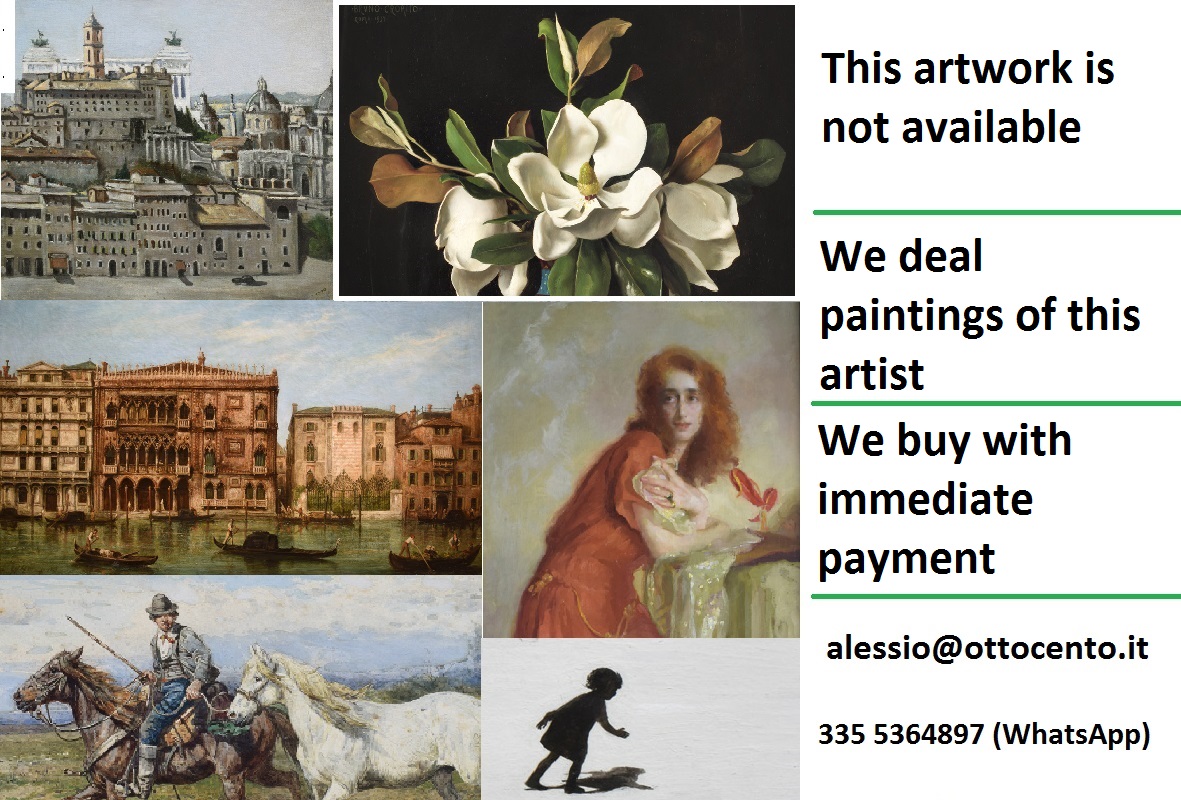Project Description
Galileo Chini (Florence 1873 – 1956), Still life with onions and pan
Oil on canvas cm 48 x 59 signed (G CHINI) lower right.
INFO: if you need more information
The figure of Galileo Chini is practically unique in the panorama of Italian art between the nineteenth and twentieth centuries. Multifaceted and precocious personality, he engages himself in an excellent manner in every aspect of art. Great decorator, sublime ceramist (he founded the manufacture “L’Arte della Ceramica” and later “Le Fornaci San Lorenzo”, introducing Art Nouveau in the Italian tradition), illustrator, set designer (his scenes of the first Turandot by Puccini), urban planner, a painter with a strong personality that ranges from Symbolism to Divisionism, up to a darker and expressionist final phase. An artist of European standing, he takes part in all the major international exhibitions (London, Brussels, Ghent, St. Petersburg among others) and in Italy at the Venice Biennials and at the Rome Quadrennials. He decorated important public and private buildings, and in 1911 he left for Siam, called by King Rama V to decorate the interior of the new palace of the Throne of Bangkok, where he made his most extraordinary decorative work.
The three-year stay in the East, as noted by Fabio Benzi, develops in Chini the meditative and transfiguration vein of reality in subtly veined chromatic rhythms, in images permeated by an unrestrained inner transport, which frees the pictorial pastas lightening them in divisionist touches that register not the division of color but the permanence in the consciousness of a glow, of a sensation.
The inner monologue, the sensitive spirit open to all circulation of intellect and sensitivity, are the constants of Chini’s paintings, like those of his European counterparts: Bonnard and Vuillard in France, Grant in England, Corinth in Germany. Galileo Chini, after the great international successes of the first decade of the century, develops more and more a character that leads him to the solitary choice of painting, almost definitively abandoning the great decorative deeds to a fresco that he still leads in the Twenties, in cycles that confirm it one of the best interpreters of the Italian Decò. In 1930 he held a large solo show at the Bernheim – Jeune gallery in Paris, the largest European gallery presenting this trend, and continued his pictorial activity by painting a series of still lifes in secluded solitude, characterized by a lyrical and sensuously melancholy lyrical intimism, presented to the various editions of the Venice Biennale.
Precisely the Parisian experience of the 1920s, during which the artist participated in the Expo, the still life presented here can be traced back to where Chini exalts the tactile pictorial values of the group of onions placed in the foreground, playing with unusual refinement with the reflections and sudden blows of light that bathe not only the surface of the vegetables but also the lid of the terracotta pan and the container with floral motifs of oriental derivation positioned in the background.





